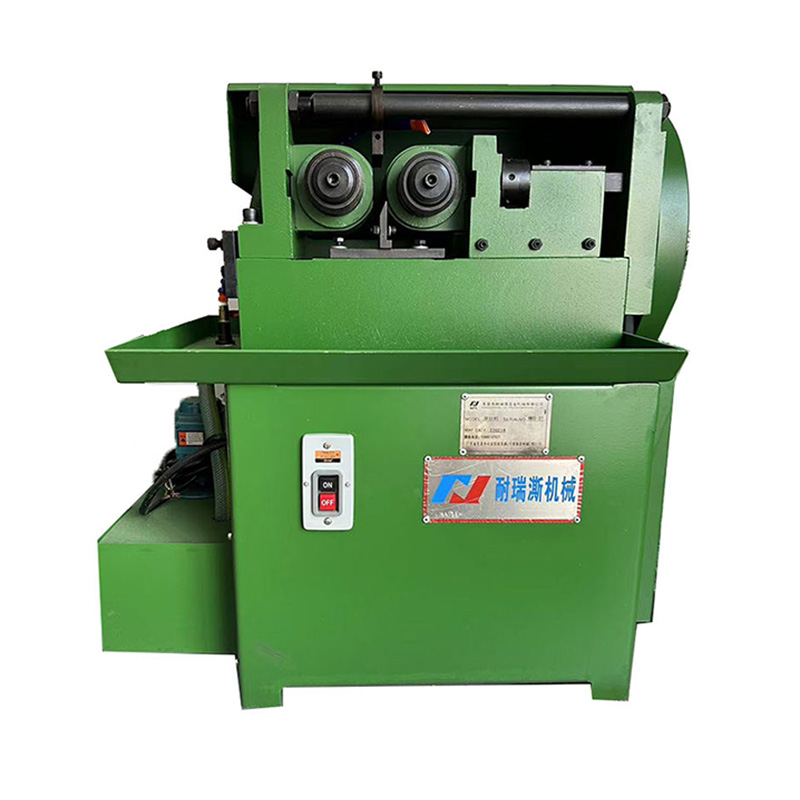Unveiling the Threading Process: Small Rebar Thread Rolling Machines vs. Traditional Methods
2024-04-16
In the construction and metalworking industries, threading rebars is a critical process for creating secure mechanical connections in reinforced concrete structures. Traditionally, threading methods such as cutting or chasing have been employed to achieve the desired thread profiles on rebars. However, advancements in technology have introduced a superior alternative: Small Rebar Thread Rolling Machines. Let's delve into how the threading process differs between Small Rebar Thread Rolling Machines and traditional methods, and the advantages offered by each approach.
Traditional Threading Methods: Cutting and Chasing
Traditional threading methods involve cutting or chasing threads onto the surface of the rebar using specialized tools, such as thread-cutting dies or thread chasers. Here's how these methods typically work:
1. Cutting Threads: In the cutting method, a thread-cutting die is used to remove material from the surface of the rebar, creating the desired thread profile. This process involves rotating the die around the rebar while applying pressure to cut into the metal and form the threads.
2. Chasing Threads: The chasing method, also known as the tap and die method, involves using a set of thread chasers or dies to form threads by displacing material on the surface of the rebar. The thread chasers are pressed against the rebar while rotating, creating the thread profile through a combination of cutting and deformation.
Threading Process with Small Rebar Thread Rolling Machines
In contrast to traditional methods, Small Rebar Thread Rolling Machines utilize a cold-forming process known as thread rolling to create threads on rebars. Here's how the threading process differs:
1. Cold-Forming Process: Thread rolling is a cold-forming process that involves deforming the surface of the rebar to create the desired thread profile without removing material. Instead of cutting into the metal, thread rolling applies pressure to displace the material, forming precise threads with tight tolerances.
2. Rolling Dies: Small Rebar Thread Rolling Machines use a set of rolling dies mounted on rotating spindles to deform the surface of the rebar and create threads. The rolling dies feature thread profiles that match the desired thread pitch and configuration, ensuring uniformity and consistency across all threaded surfaces.
3. Pressure and Rotation: During operation, the rebar is fed into the threading area of the machine, where it is held securely in place. The rolling dies apply pressure and rotate against the surface of the rebar, causing it to deform and form threads as it passes through the threading area.
4. Precise and Consistent Threads: The thread rolling process produces precise and consistent threads with excellent surface finish and dimensional accuracy. Since no material is removed during thread rolling, the resulting threads exhibit superior strength, durability, and resistance to fatigue and corrosion.
Advantages of Small Rebar Thread Rolling Machines
Compared to traditional threading methods, Small Rebar Thread Rolling Machines offer several advantages:
- Superior Strength: Thread rolling creates threads with superior strength and resistance to loosening compared to cut threads.
- Precision and Consistency: Thread rolling ensures precise thread dimensions and pitch accuracy, meeting stringent quality standards.
- Increased Efficiency: Thread rolling is a faster and more efficient process, allowing for high-volume production with minimal downtime.
- Cost-Effectiveness: By eliminating the need for consumable tooling and reducing material waste, thread rolling offers significant cost savings over time.
Conclusion
In conclusion, the threading process differs significantly between Small Rebar Thread Rolling Machines and traditional methods such as cutting or chasing. While traditional methods involve removing material to form threads, Small Rebar Thread Rolling Machines utilize a cold-forming process to deform the surface of the rebar and create precise threads without material removal. This results in threads with superior strength, durability, and dimensional accuracy, making Small Rebar Thread Rolling Machines the preferred choice for threading rebars in construction and metalworking applications.



